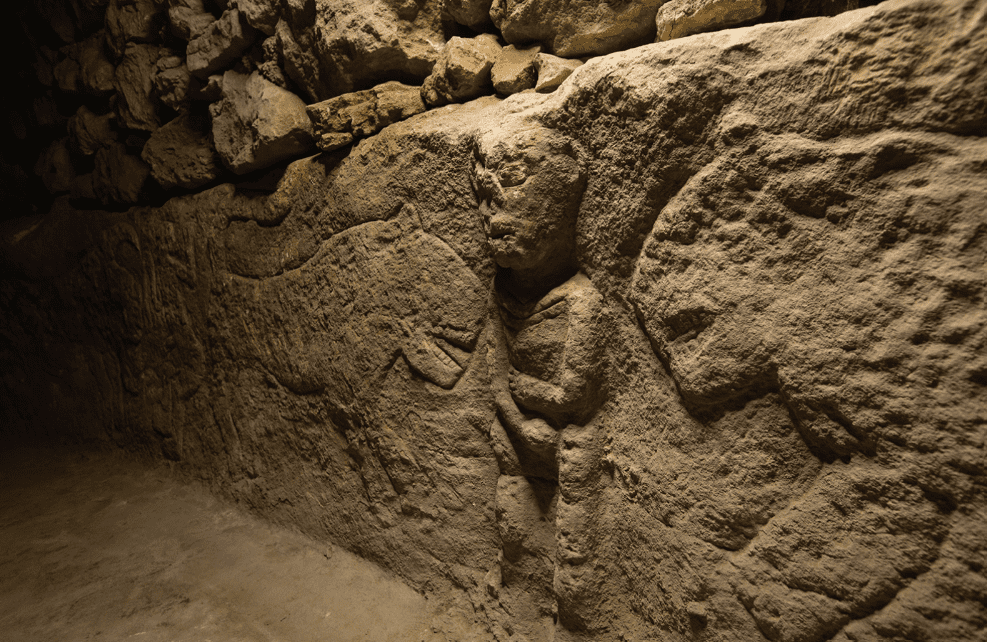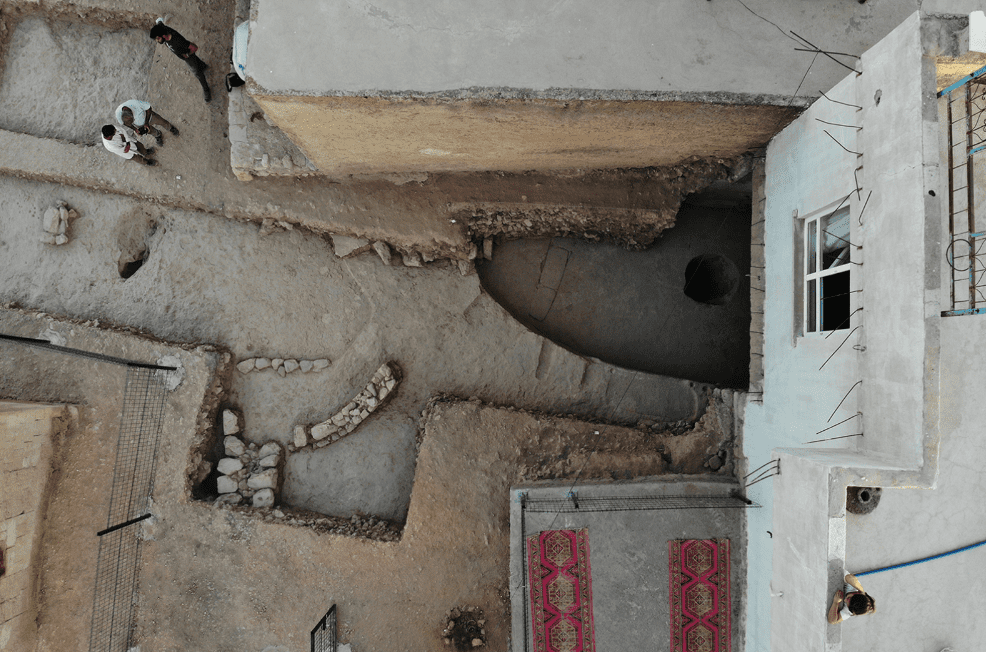Archaeologists have discovered what they’re calling the oldest narrative artwork scene in the world. While you might be expecting a painting of a graceful God or a victorious battle scene, it actually depicts a guy holding his penis as he’s being attacked by leopards. Men, eh?
The scene was found on a Neolithic bench in present-day Turkey at the archaeological site of Sayburç, which is around 11,000 years old. Along with the phallus-displaying man, the bench depicts another scene of a person shaking a rattle at a bull.
Both scenes depict a human facing up against a dangerous animal, suggesting the two pieces were crafted to complement each other and form a single narrative. The researchers note that the teeth of the leopards and the horns of the bull are emphasized to highlight the danger in the scenes.
“These figures, engraved together to depict a narrative, are the first known examples of such a holistic scene. This was a picture of the stories that formed the ideology of the people of that period”, Dr Eylem Özdoğan, study author and archaeologist from Istanbul University, said in a statement sent to IFLScience.

Another shot of the relief. Image credit: K. Akdemir
The scenes can be found in building a large communal structure that likely served as a space for celebrations and gatherings. To help people observe the center of the space it would have been lined with benches, which had these imaginative scenes carved into them.
It’s unclear who is depicted in these scenes, although Dr Özdoğan believes that they were important individuals, like a mythical figure or a person from a historical tale.
When this artwork was created in the 9th century BCE, there was a huge shift occurring in this part of Eurasia. Laying on the outskirts of the Fertile Cresent, people of this land started to transition from a mobile hunter-gatherer lifestyle to settlements powered by stable agriculture.

A bird’s eye view of the archaeological site. Image credit: Sayburc project archive
This revolution is arguably one of the most important moments in the history of humankind. For the overwhelming majority of the human story, we were hunter-gatherers who constantly struggled to eat and survive, but the advent of agriculture suddenly gave populations access to reliable food supplies and even a surplus of resources. This snowballed into the formation of organized political structures, densely populated settlements, specialized labor, and the rapid advancement of technology and culture.
However, relatively little is known about this time as written sources are few and far between. That’s why archaeological discoveries like this one are so helpful in shining light on what early agricultural societies were like.
“Archaeological evidence can provide some insight into the traditions of the past societies but clearer evidence rarely survives, so this discovery is exciting,” explained Dr Özdoğan. “Sayburç has very clear evidence in this respect and has the potential to tell us a lot about the Neolithic society that we do not know, yet.”
The new study was published in the journal Antiquity.
Source Link: Man Waggling His Willy At Leopards Found On World's Earliest Narrative Art